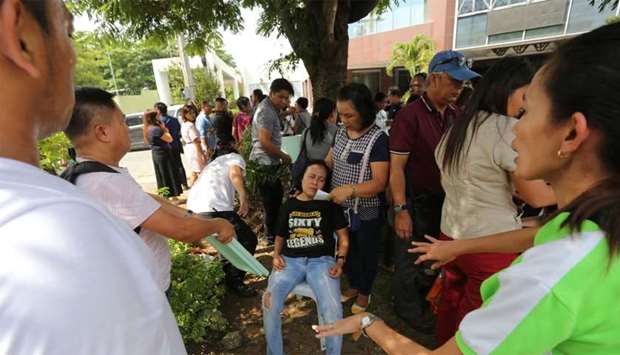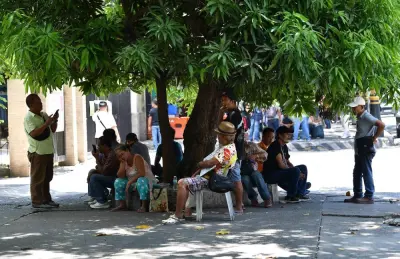A 6.6-magnitude earthquake struck the southern Philippines on Tuesday, killing at least six people and causing buildings to collapse, officials said, more than one week after a strong quake jolted the same area.
More than 300 people were reported injured in the quake, whose epicentre was located near Tulunan town in Cotabato province, 972 kilometres south of Manila, the Philippine Institute of Volcanology and Siesmology (Phivolcs) said.
A father and his 5-year-old child were killed in a rockslide in nearby Arakan town, said Governor Emily Lou Mendoza of Cotabato province. A 1-year-old child was also rushed to hospital, she added.
A 66-year-old man died when he was struck by falling hollow blocks from a church that was being repaired in Koronadal City in South Cotabato province, said Rolly Doane Aquino, operations chief of the provincial disaster risk reduction and management office.
In Magsaysay town in Davao Del Sur province, a 15-year-old student was killed after being hit in the head by falling debris in a school in the village of Casuga, while two 33-year-old men died in a landslide in the village of Upper Bala, said Corporal Krister John Nahine, a town police spokesman.
The earthquake struck at 9:04 am (0104 GMT), and was felt at different intensities in almost the entire southern region of Mindanao, the Phivolcs institute said.
Power was cut off in some areas affected by the quake, while several towns reported the collapse of several houses and buildings, local disaster relief officials said.
Most local officials ordered the temporary closure of schools and government offices to allow engineers to check the safety of the buildings.
‘This was a stronger earthquake from last time,’ Tulunan Mayor Reuel Limbungan told DZMM.
On October 16, seven people were killed and 215 hurt when a 6.3-magnitude quake struck almost the same area, with the epicentre located south-west of Makilala town in nearby North Cotobato province.
‘We were terrified,’ said Abi Agduma, a mother of three and resident of nearby Sultan Kudarat province. ‘My children were still afraid to sleep in their room because of the previous quake. Now, they won't go inside our home.’ ‘We will set up a tent outside our home for now,’ she told DZMM.
Presidential spokesman Salvador Panelo assured the affected residents that government agencies and local government units were ‘undertaking rapid damage assessment and needs analysis’ to be able to provide assistance.
‘We ask our citizens to remain calm but vigilant and we urge them to refrain from spreading disinformation that may cause undue alarm, panic and stress to many people,’ he said. ‘We also urge them to monitor developments through the alerts and bulletins of official government channels.’ The Philippines is located on the Pacific Ring of Fire, where about 90 per cent of the world's earthquakes take place.
The last major quake to hit the country was a 7.1-magnitude event that killed more than 220 people in the central Philippines in October 2013.
In July 1990, more than 2,400 people were killed on the northern island of Luzon in a 7.8-magnitude quake, one of the strongest ever to hit the country.



